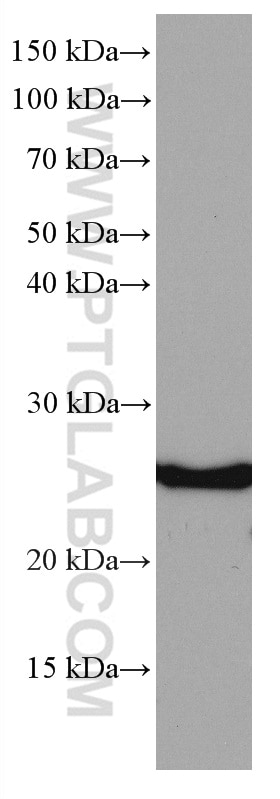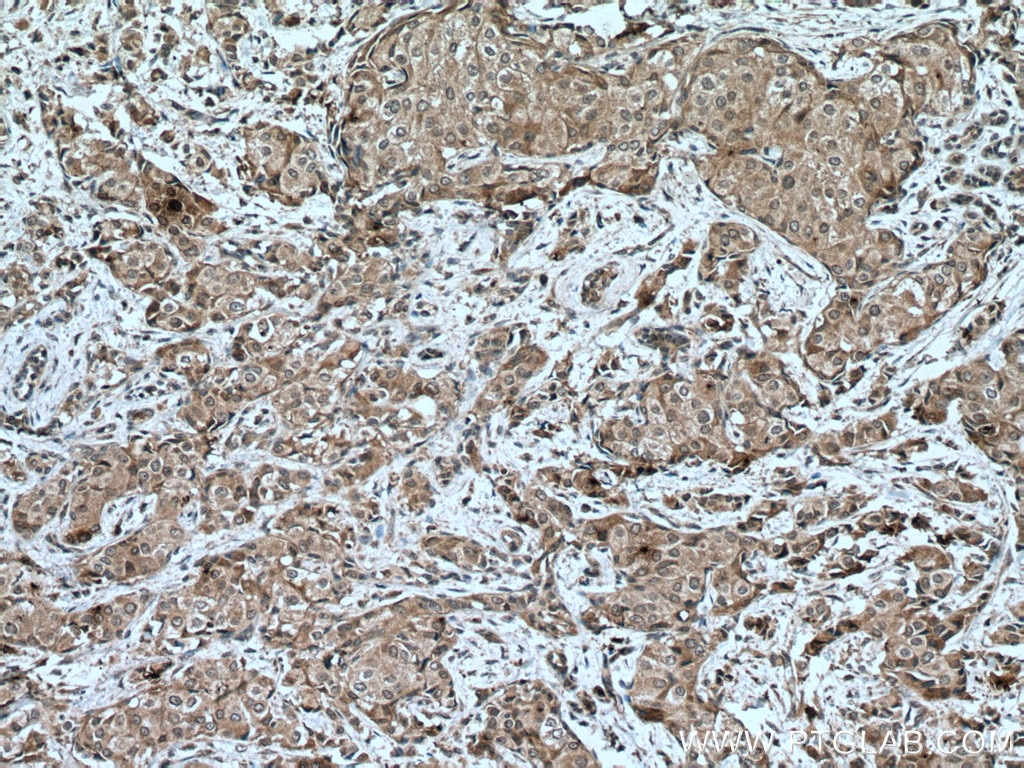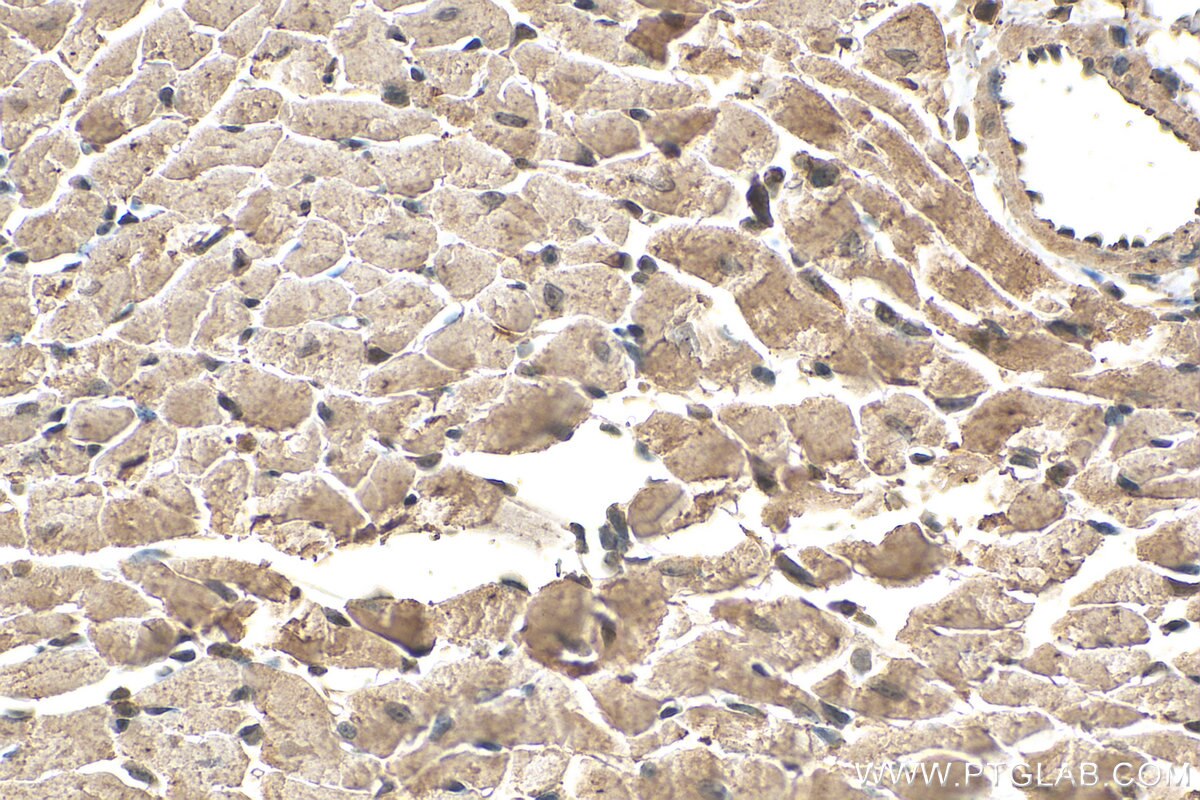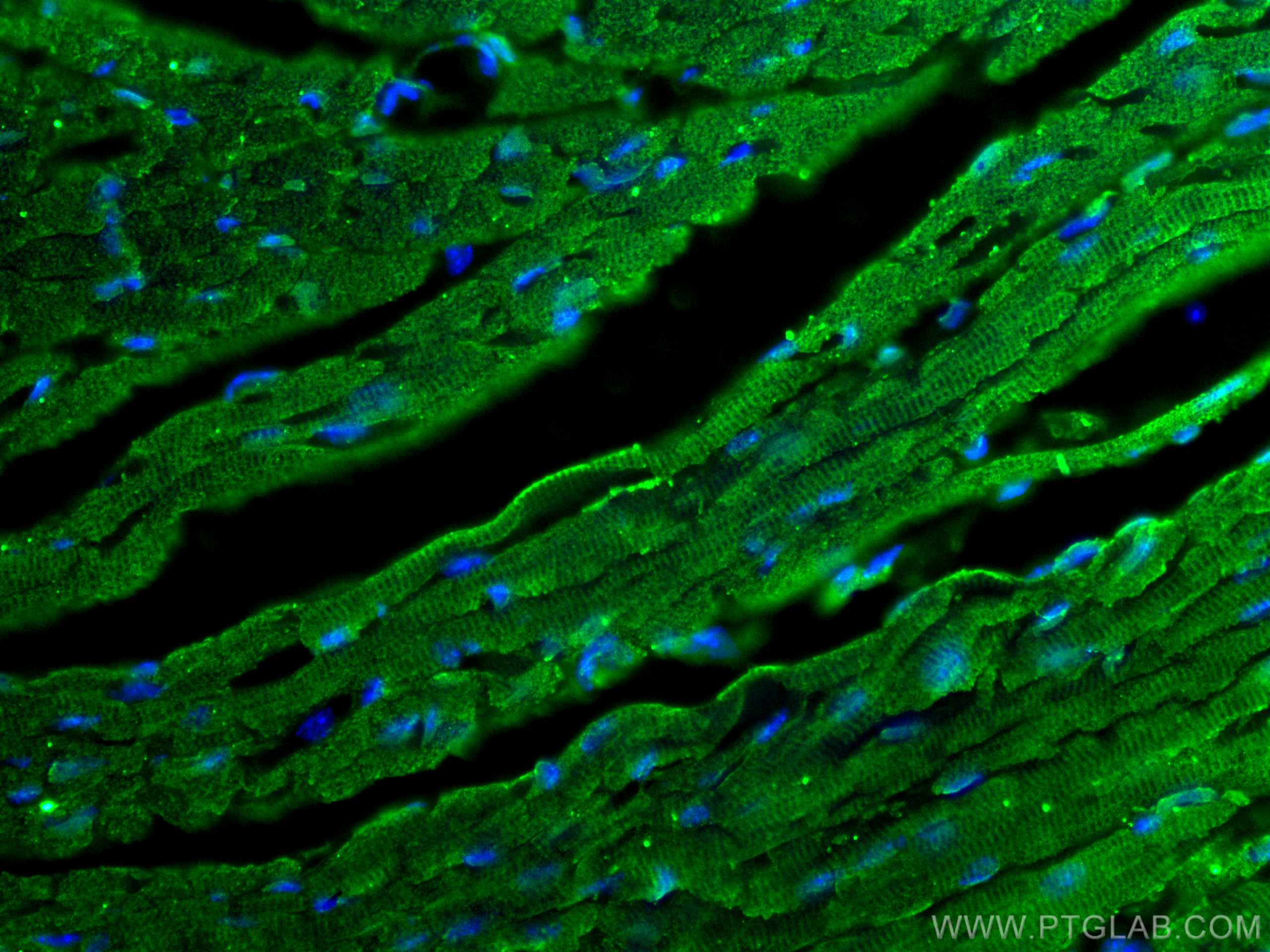Anticorps Monoclonal anti-SOCS3
SOCS3 Monoclonal Antibody for WB, IHC, IF-P, ELISA
Hôte / Isotype
Mouse / IgG1
Réactivité testée
Humain, souris et plus (1)
Applications
WB, IHC, IF-P, IP, ELISA
Conjugaison
Non conjugué
CloneNo.
1G2B12
N° de cat : 66797-1-Ig
Synonymes
Galerie de données de validation
Applications testées
| Résultats positifs en WB | cellules Daudi, cellules Jurkat, cellules Ramos, tissu splénique de porc |
| Résultats positifs en IHC | tissu de cancer du sein humain, tissu cardiaque de souris il est suggéré de démasquer l'antigène avec un tampon de TE buffer pH 9.0; (*) À défaut, 'le démasquage de l'antigène peut être 'effectué avec un tampon citrate pH 6,0. |
| Résultats positifs en IF-P | tissu cardiaque de souris, |
Dilution recommandée
| Application | Dilution |
|---|---|
| Western Blot (WB) | WB : 1:5000-1:50000 |
| Immunohistochimie (IHC) | IHC : 1:250-1:1000 |
| Immunofluorescence (IF)-P | IF-P : 1:400-1:1600 |
| It is recommended that this reagent should be titrated in each testing system to obtain optimal results. | |
| Sample-dependent, check data in validation data gallery | |
Applications publiées
| KD/KO | See 1 publications below |
| WB | See 16 publications below |
| IHC | See 2 publications below |
| IF | See 2 publications below |
| IP | See 1 publications below |
Informations sur le produit
66797-1-Ig cible SOCS3 dans les applications de WB, IHC, IF-P, IP, ELISA et montre une réactivité avec des échantillons Humain, souris
| Réactivité | Humain, souris |
| Réactivité citée | rat, Humain, souris |
| Hôte / Isotype | Mouse / IgG1 |
| Clonalité | Monoclonal |
| Type | Anticorps |
| Immunogène | SOCS3 Protéine recombinante Ag5386 |
| Nom complet | suppressor of cytokine signaling 3 |
| Masse moléculaire calculée | 25 kDa |
| Poids moléculaire observé | 25 kDa |
| Numéro d’acquisition GenBank | BC060858 |
| Symbole du gène | SOCS3 |
| Identification du gène (NCBI) | 9021 |
| Conjugaison | Non conjugué |
| Forme | Liquide |
| Méthode de purification | Purification par protéine G |
| Tampon de stockage | PBS with 0.02% sodium azide and 50% glycerol |
| Conditions de stockage | Stocker à -20°C. Stable pendant un an après l'expédition. L'aliquotage n'est pas nécessaire pour le stockage à -20oC Les 20ul contiennent 0,1% de BSA. |
Informations générales
Suppressor of cytokine signaling 3 (SOCS3) is a member of SOCS family that these proteins induced to attenuate cytokine signal transduction in response to signals from a diverse range of cytokines and growth factors. SOCS3 is a negative regulatory protein that inhibits signaling induced by IL-6 via preventing JAK mediated activation of STAT3. However SOCS3 can positively regulate the ERK-MAPK pathway, inhibit the NF-kB pathway (PMID:26429311,25035930). In addition, SOCS3 brings a great impact on immune responses by inhibiting signaling stimulus, such as LPS, type I and type II IFNs, and IL-12. SOCS3 is widely expressed in heart, placenta, skeletal muscle, peripheral blood leukocytes, fetal and adult lung, and fetal liver and kidney (PMID: 22961088). Dysregulation of SOCS3 functions can cause a variety of diseases, including allergy, autoimmune diseases, inflammation and cancer (PMID:26429311).
Protocole
| Product Specific Protocols | |
|---|---|
| WB protocol for SOCS3 antibody 66797-1-Ig | Download protocol |
| IHC protocol for SOCS3 antibody 66797-1-Ig | Download protocol |
| IF protocol for SOCS3 antibody 66797-1-Ig | Download protocol |
| Standard Protocols | |
|---|---|
| Click here to view our Standard Protocols |
Publications
| Species | Application | Title |
|---|---|---|
Acta Pharmacol Sin Epac activation ameliorates tubulointerstitial inflammation in diabetic nephropathy.
| ||
Int J Mol Sci Leptin Modulates the Response of Brown Adipose Tissue to Negative Energy Balance: Implication of the GH/IGF-I Axis. | ||
J Ethnopharmacol Simiao San alleviates hyperuricemia and kidney inflammation by inhibiting NLRP3 inflammasome and JAK2/STAT3 signaling in hyperuricemia mice | ||
Mol Nutr Food Res Single Treatment of Vitamin D3 Ameliorates LPS-Induced Acute Lung Injury through Changing Lung Rodentibacter abundance. |








